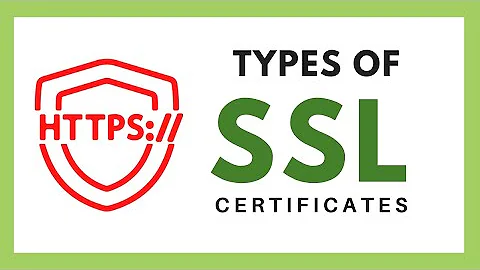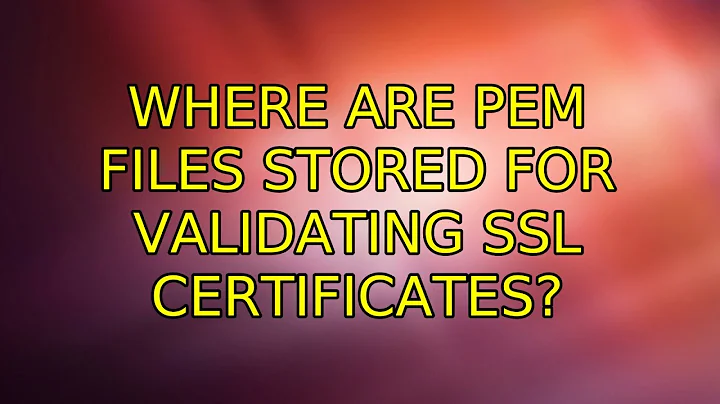Where are PEM files stored for validating SSL certificates?
Solution 1
So if you have installed ca-certificates you can easily find out where the files are. Open a terminal and enter
> dpkg -L ca-certificates
/.
/etc
/etc/ssl
/etc/ssl/certs
/etc/ca-certificates
/etc/ca-certificates/update.d
/usr
/usr/sbin
/usr/sbin/update-ca-certificates
/usr/share
/usr/share/ca-certificates
/usr/share/ca-certificates/spi-inc.org
…
So you'll see that all certificates are in /usr/share/ca-certificates. However the default location for certificates is /etc/ssl/certs. You might find additional certificates there.
Solution 2
Try this
sudo find / |grep "\.pem"
This will list all the .pem files present on your system and their full path.
Solution 3
Probably this would help you:
apt-get install apt-file
apt-file update
apt-file list ca-certificates
Related videos on Youtube
mathematician1975
Updated on September 18, 2022Comments
-
mathematician1975 over 1 year
I'm writing a SOAP client application on Ubuntu using OpenSSL and C++. I am having trouble getting my code to validate the server certificate even though I know has a valid certificate.
Just to make sure I would like to check that it's the case and apparently PEM files are used to list valid certificates.
Can anyone tell me where these files reside on my Ubuntu 12.04 installation? I have the ca-certificates package installed on my machine, so these files must be there somewhere?
-
guntbert almost 10 yearsThis is not really an answer.
-
Monica Heddneck over 7 yearsNot an answer but very useful! Thanks @Mausy5043 for posting this.
-
sondra.kinsey almost 7 yearssudo is probably unnecessary, since these files needn't be hidden. Also, find can itself test name parameters, so I recommend
find / -name "*.pem" -
 Mausy5043 almost 7 years@sondra.kinsey :
Mausy5043 almost 7 years@sondra.kinsey :finding upwards from/without usingsudowill generate a lot of errors for directories that the user has no access to. Usingsudo(or redirecting by adding2> /dev/nullkeeps the output clean.




